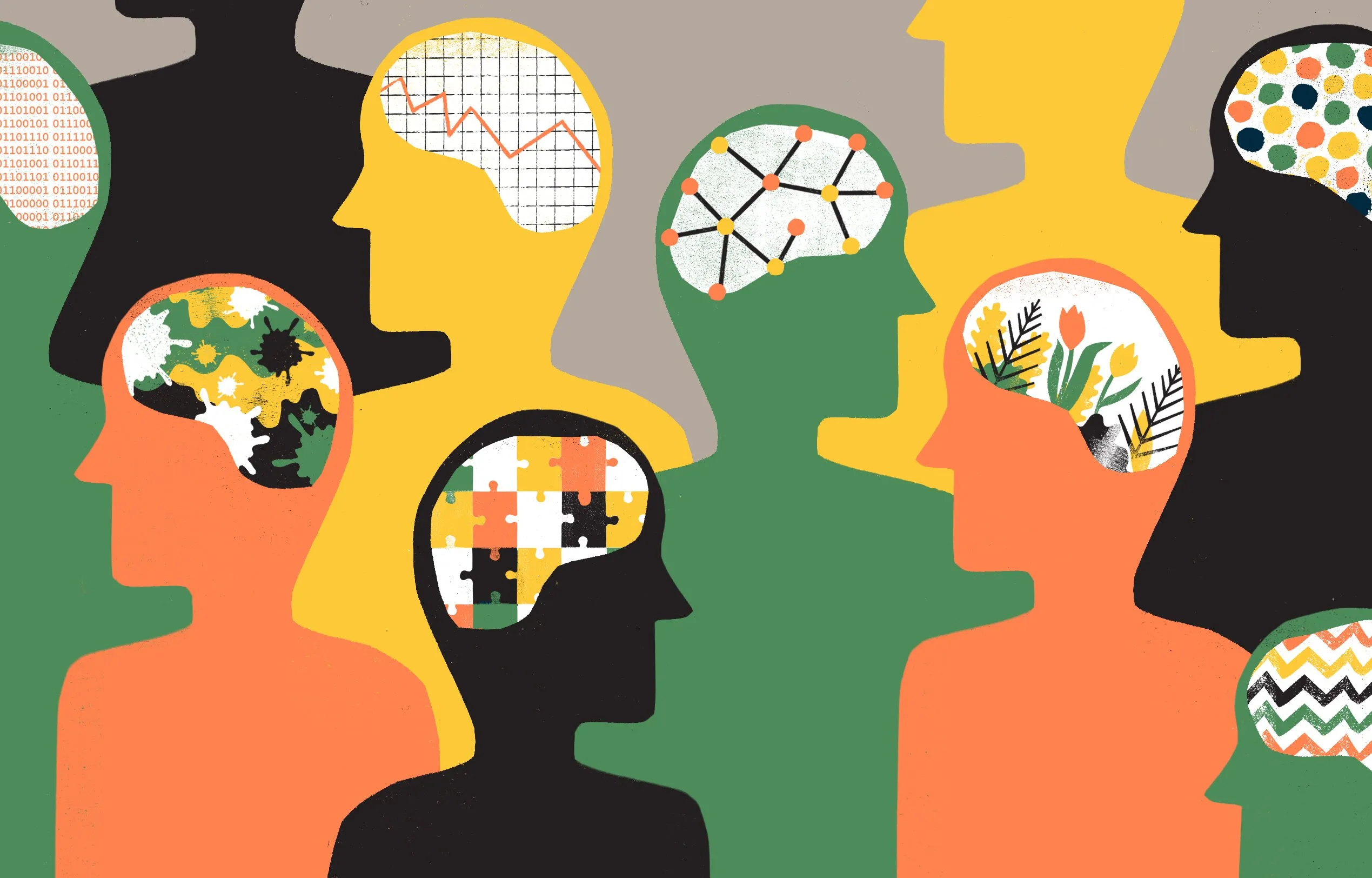Part 1
Your appearance and personality are two sides of the same coin. They are interrelated and have a significant influence on the way people perceive you. While your appearance is what people see physically, your personality is what defines you as a human being. In this blog, we will be discussing the connection between appearance and personality and how it impacts our lives. So, let’s dive right in.
Appearance vs Personality
Appearances and personalities are aspects that are entwined in our lives, and they play significant roles in shaping identity, behavior, social status, and relationships. Regardless, they differ and are often used interchangeably, thus the need to understand the difference.
Appearance vs Personality:
Appearance refers to the physical attributes that someone possesses, while personality describes the psychological traits and characteristics that define who a person is. You can change and improve your appearance through grooming, exercise, and dressing, but personality is a complex and deep-seated aspect that requires intentional development.
Having a perfect appearance does not necessarily mean a person has an outstanding personality or vice versa. For instance, someone may be physically attractive but lacks social skills, while another person may be average looking but possess great communication skills and a likable character.
Understanding the difference ensures that we don’t judge people based on their appearance alone but rather seek to know and understand their personalities at a deeper level.
First Impressions:
First impressions are crucial, and they are often based on appearance. However, it’s important to note that first impressions can be deceptive and should not be the sole factor in determining a person’s potential, abilities, or character. It’s crucial to give everyone a fair chance to showcase their personalities before making judgments based on appearances.
The Influence of Appearance on Personality:
While appearance may not necessarily influence personality, it can affect a person’s confidence and self-esteem. Society often dictates certain beauty standards, and people who consider themselves unattractive may struggle with low self-esteem and confidence issues.
The Impact of Personality on Appearance:
Personality traits such as confidence, positivity, and kindness often manifest physically, and people tend to perceive individuals who possess these qualities as attractive. Additionally, a person’s behavior and body language can significantly affect their appearance and how they are perceived.
Perceptual Bias:
Perceptional bias based on appearance is a real issue that affects many people. It’s crucial to recognize and mitigate any biases and stereotypes we may have towards people based on their appearance. By doing so, we can create a more inclusive and accepting society where people are judged based on their character and not their physical attributes.
In fact, while there is a connection between appearance and personality, it’s crucial to understand that they differ, and it’s the latter that truly defines who a person is. So, let’s work towards appreciating people for who they are beyond their physical attributes.
I should say first impressions are often the ones that stick with us. Whether we are meeting someone for the very first time, or just seeing them for the first time in a while, these initial moments can have a lasting impact on our perception of that person. But why do first impressions matter so much?
Well, for one thing, they give us a quick snapshot of who a person is, or at least who they appear to be. This can be incredibly helpful in navigating social situations and figuring out who we want to spend our time with. But how are first impressions formed?
Believe it or not, a lot of it has to do with appearance. Studies have shown that people tend to make snap judgments about others based on their looks, often without even realizing it. We might assume that someone who is dressed well is more confident or competent, for example, or that someone who is smiling is friendly and approachable.
Of course, appearance isn’t the only factor in first impressions. Our behavior, body language, and communication skills all play a role as well. But the bottom line is that first impressions matter, whether we like it or not.
So the next time you’re meeting someone new or trying to make a good impression, remember that appearance and personality are closely intertwined. Strive to put your best foot forward in both areas, and you’ll be off to a great start.
***
The Influence of Appearance on Personality
We all have heard the phrase, “Don’t judge a book by its cover.” But let’s be real, humans are wired to judge, and our appearance plays a significant role in that judgment. Appearance and personality may seem unrelated to some, but research states that they are deeply interconnected. Appearance can shape how we see ourselves, and when we feel more positively about how we look, it can boost our self-esteem, creating a positive impact on our personalities. Conversely, our personality can also influence how we present ourselves.
Appearance vs Personality:
Understanding the difference is essential, as appearance is often the first thing we notice in a person, while personality is the spark that keeps us attracted in the long run. Appearance is more external, and it encompasses both physical characteristics such as body shape, hair colour, skin tone, and clothing choices made by an individual. Conversely, personality is more internal and includes a person’s traits, emotions, and behaviours.
Why they matter? It only takes a few seconds to form a first impression, and that impression can last a lifetime. Our brains are wired to make quick judgments based on appearance, which is why your first impression is critical. This holds true for both personal and professional settings. How they are formed? Research shows that first impressions are based on various factors, including appearance, facial expressions, tone of voice, posture, body language, and behavior.
***
Part 2
Self-esteem and confidence:
Our appearance can profoundly impact how we see ourselves. When we feel good about our appearance, our confidence and self-esteem go up, and we are more likely to engage in positive behaviours. However, the opposite is also true. When we feel negative about our appearance, it can lead to a decrease in self-esteem and confidence, discouraging us from engaging in positive behaviors.
Society’s standards:
Society sets certain standards for physical appearance, which can create unrealistic expectations and standards that people need to meet. It can lead to feelings of inadequacy and lower self-esteem. It is vital to recognise and appreciate that everyone’s appearance is unique and that we should not let societal norms dictate how we feel about ourselves.
The Impact of Personality on Appearance:
Perceived attractiveness:
Our personality influences how people perceive our attractiveness. People tend to view individuals with positive personalities as more attractive than those with negative personalities. Similarly, attitudes and behaviours can also impact perceived attractiveness.
Behaviour and body language:
Our personality affects our behaviour, which in turn impacts how people perceive us physically. A confident and sociable person tends to stand tall, speak loudly, and maintain eye contact. This gives off a positive impression both in our personal and professional spheres.
Dealing with stereotype threats:
Stereotypes or bias can influence our perceptions towards people, leading us to make assumptions based on their appearance or personality. It is crucial to recognize and address these biases to ensure that we don’t miss out on the opportunities due to our unconscious biases.
Recognizing and mitigating perceptual bias:
Being aware of these biases is the first step towards mitigating them. We can make an effort to look past appearances and challenge our perceptions to see the true essence of a person. By recognizing our biases, we can make an effort to expand our perspectives and appreciate everyone’s uniqueness.
In fact, appearance and personality have a deeper connection than what meets the eye. While they are separate entities, they are interconnected and can influence our lives in more ways than one. It is essential to recognise and appreciate our unique qualities and not let societal norms define our personalities or appearance. By improving our self-esteem and combating biases, we can build a better future for ourselves and everyone around us.
We’ve all heard the saying, “beauty is only skin deep,” but is there more to it than that? Can our personality affect how we are perceived by others in terms of our physical appearance? The answer might surprise you.
Perceived attractiveness is subjective and influenced by cultural ideals and personal preferences. However, studies have shown that individuals with positive personality traits are perceived as more attractive than those who possess negative traits. Kindness, humor, and intelligence are just a few examples of positive traits that can enhance one’s perceived attractiveness.
Moreover, our behavior and body language shape how others perceive us. Individuals who exude confidence and positivity through their body language are often perceived as more attractive and approachable. On the other hand, negative body language such as slouching or avoiding eye contact can detract from one’s overall appearance.
So, the next time you’re stressing over your physical appearance, remember that your personality shines through and plays a significant role in how others perceive you. Embracing positive traits and confident body language can enhance your overall perceived attractiveness.
Dealing with stereotype threats can be challenging, especially when it comes to appearance and personality. We are accustomed to certain standards set by society that define beauty and attractiveness. So, it’s no surprise that we tend to judge people based on their appearance.
Recognizing and mitigating perceptual bias is key to understanding that there is more to someone’s personality than meets the eye. It is important to be aware of our biases and make an effort to challenge them. We should strive to seek out the unique and intriguing qualities in others beyond their looks.
Growing intellectually and emotionally in a world that is quick to judge based on surface level traits can be hard. But practicing self-awareness and challenging our biases can help us appreciate every person’s one-of-a-kind qualities.
Remember, appearances can be deceiving, and we should not let them define someone’s unique personality.
Conclusion
Appearance and personality are closely connected, impacting how we perceive ourselves and how we are perceived by others. Society has established standards that affect our self-esteem and reflect on our personality traits. Our behavior, body language, and attractiveness also play a significant role in shaping our personalities. First impressions matter, but we should be mindful of the perceptual bias they can create. It is essential to recognize and mitigate stereotypes to avoid being unfairly judged. The key takeaway is that both appearance and personality are integral parts of who we are, and they are intricately linked.





 طراحی سایت آکسایا )
طراحی سایت آکسایا )